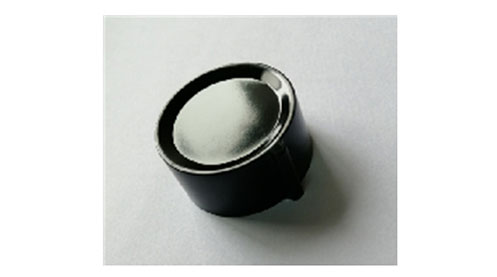Thermoset plastic molding processing began in the early 1960s, and its products have been developed rapidly and widely used due to their high heat resistance, deformation resistance and good electrical properties.
The thermosetting plastic is added into the barrel, the heated barrel and the rotating screw make the raw material melt and plasticize into a viscous flow state. At this time, a physical reaction occurs in the raw material, and then it is pushed by the screw (or plunger) to a higher Inject the molten material into the molding mold at a certain injection pressure and a certain injection speed, heat it up, and under high pressure and high temperature conditions, a crosslinking reaction occurs with the curing agent added at the same time. This chemical reaction releases low molecular substances such as water and ammonia. . After the product hardens, it can be removed from the thermosetting plastic injection molding mold.
The plasticizing temperature of the thermosetting plastic in the barrel should be strictly controlled. Generally, the hot water circulation heating cylinder with constant temperature control is used; the temperature of the cylinder is controlled at about 90 ℃. When the temperature is low, the plasticization of the raw materials is not good, and the fluidity of the melt is poor; when the temperature is high, the fluidity of the melt becomes smaller and even hardens. During injection, heat is generated due to the friction between the molten material and the nozzle, and the temperature of the material at this time should be between 100 and 130 °C. The temperature of the molten material injected into the mold is controlled at 160-170°C.

When the thermosetting melt is cross-linked in the forming mold under the action of high pressure and high temperature, low-molecular substances are precipitated, and the mold clamping mechanism is required to meet the exhaust action requirements. That is to say, the mold clamping mechanism should not only have the mold clamping force to ensure the high-pressure injection of molten material, but also have the action requirements of opening the mold in time to discharge gas due to the chemical process reaction of raw materials.
The residence time of the thermosetting plastic in the barrel should not be too long, and the temperature should not fluctuate greatly, so as to prevent the molten material from solidifying in advance. For the molding of thermosetting plastics, the injection pressure of the molten material in the injection molding system is higher than that of thermoplastics. This is because the viscosity of thermosetting plastics is relatively high, and this viscosity will increase sharply with time at temperature. Therefore, in order to ensure the complete filling of the molten material, high-pressure fast filling must be used. This kind of high-pressure injection and high-pressure holding is also beneficial to the stability of the product structure and a certain degree of compactness.
Most of the raw materials for thermosetting plastic products are based on resins and fillers, and then added some other additives. For this kind of multi-component raw material, it should be noted that the melt has good fluidity and a wide plasticizing temperature range, and can be plasticized at a lower temperature. In addition, it is also required that the thermal stability of the raw material is good. When the residence time in the barrel of the injection molding system is long, the curing reaction cannot occur; after entering the molding mold, it must be able to cure quickly to shorten the product molding cycle.